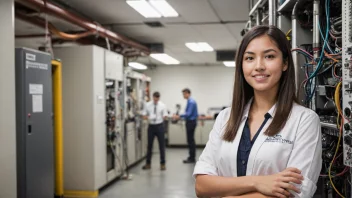The concept of a circular economy is gaining momentum as societies look for sustainable solutions to combat waste and resource depletion. Unlike the traditional linear economy, which follows a 'take, make, dispose' model, the circular economy emphasizes the importance of reusing, recycling, and regenerating materials. Engineering plays a crucial role in this transition by developing technologies and processes that facilitate these principles.
One of the key areas where engineering contributes to a circular economy is in materials science. Engineers are working on creating new materials that are not only sustainable but also designed for longevity and recyclability. For instance, biodegradable plastics and composite materials can significantly reduce waste in landfills. By innovating materials that can decompose or be repurposed, engineers are helping to close the loop in product lifecycles.
Another important aspect is the design of products that are easier to repair and upgrade. Engineers are increasingly adopting design strategies that prioritize modularity, allowing components to be replaced without discarding the entire product. This approach not only extends the life of products but also minimizes the demand for new raw materials. For example, companies like Fairphone have pioneered modular smartphones that can be easily repaired, showcasing how engineering can support sustainable consumer practices.
In addition to product design, engineering advancements in waste management and recycling technologies are essential for a circular economy. Innovations such as advanced sorting systems, chemical recycling, and waste-to-energy processes are improving the efficiency of recycling operations. Engineers are developing smart waste management systems that use data analytics and IoT technologies to optimize collection routes and reduce contamination rates in recycling streams.
Moreover, the integration of renewable energy sources into manufacturing processes is a game-changer for sustainability. Engineers are designing systems that utilize solar, wind, and other renewable energies to power production, reducing reliance on fossil fuels. This shift not only lowers carbon emissions but also aligns with the principles of a circular economy by promoting sustainable energy use.
The role of engineering in the circular economy extends to social dimensions as well. Engineers are collaborating with policymakers, businesses, and communities to foster a culture of sustainability. This interdisciplinary approach ensures that engineering solutions are not only technically sound but also socially responsible and economically viable.
In conclusion, engineering is at the forefront of the circular economy, driving innovations that promote sustainability and resource efficiency. From developing new materials to enhancing recycling processes and integrating renewable energy, engineers are creating solutions that help to reduce waste and extend the lifecycle of products. As society continues to embrace the principles of a circular economy, the contributions of engineering will be vital in shaping a sustainable future.






